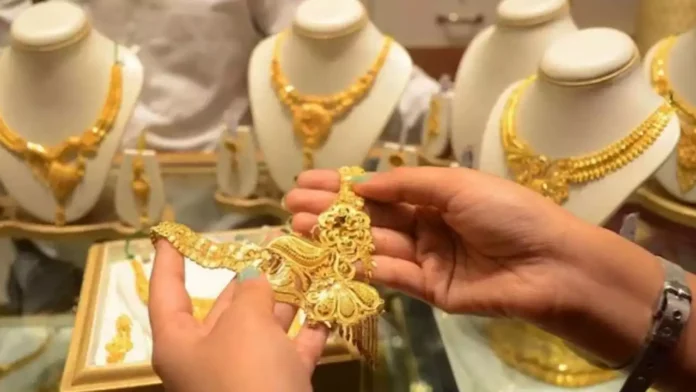Organized gold jewellery retailers are set to achieve a 17-19% year-on-year revenue growth in fiscal 2025, according to a CRISIL Ratings analysis of 54 gold jewellery retailers, which account for 32% of the organized jewellery sector revenue. This growth is driven by higher realizations stemming from elevated gold prices, while volume is expected to remain steady.
Retailers are expected to intensify marketing and promotional efforts this fiscal to counter the downturn in demand amidst escalating gold prices. Consequently, operating profitability might see a slight decline of 20-40 basis points year-on-year to 7.7-7.9%. Additionally, there could be an increase in working capital needs due to elevated inventory caused by the significant surge in gold prices and the establishment of new stores. However, it’s anticipated that credit profiles will remain steady.
The organized sector comprises just over one-third of the market, while the remaining portion is dominated by the highly fragmented unorganized sector.
Continue Exploring: Plain gold jewellery exports surge by 27.45% to $342.27 Million in April 2024
The domestic gold price surged by 15% over fiscal year 2024, reaching INR 67,000 per 10 grams by the end of March 2024. It further rose to approximately INR 73,000 in April 2024, with gold maintaining its allure as a safe investment choice for both central banks worldwide and end consumers amidst geopolitical uncertainties.
Aditya Jhaver, Director at CRISIL Ratings, notes, “In addition to boosting branding and marketing spending, retailers are anticipated to provide increased discounts to customers while expanding their range of product designs to attract buyers in the face of elevated gold prices. We foresee a trend towards lower carat gold jewellery and a sustained promotion of gold exchange programs to bolster sales volume.” Consequently, the proportion of gold exchange schemes is expected to rise, constituting nearly a third of the total volume for most major retailers.
Furthermore, organized retailers are poised to further expand their market share at the expense of unorganized counterparts, buoyed by evolving consumer preferences and the extension of stores into Tier 1 and 2 cities, as well as beyond. Bolstered by robust balance sheets, the expansion of stores, predominantly by major jewelry retailers, has witnessed robust double-digit growth post-pandemic. However, the rate of store additions is anticipated to slow to 10-12% in fiscal 2025, reflecting the relatively stagnant volume.
The rise in gold prices will lead to the replenishment of gold inventory at a higher cost this fiscal year. Alongside the inventory required for new stores, this will result in increased working capital debt. The availability of bank funding for established gold jewellery retailers has improved in recent years, as seen in the steady gross bank credit to the sector, and this trend is expected to continue over the medium term.
Continue Exploring: Indian diamond jewellery market set to soar, expected to reach US$ 17 Billion by 2031
According to Himank Sharma, Director at CRISIL Ratings, “Robust cash generation, stemming from healthy revenue growth and satisfactory profitability, will maintain the stable credit profiles of organized gold jewellery retailers, even in the face of anticipated increases in working capital borrowings. Debt indicators are projected to remain reassuring in fiscal 2025, showing only a slight moderation from the levels seen in fiscal 2024. The total outside liabilities to tangible net worth ratio and interest coverage ratios are expected to range between 1.0-1.1 times and 8.0-8.2 times, respectively.”
The sharp fluctuations in gold prices, shifts in government regulations and import duties concerning gold, along with changes in consumer sentiment, will require close monitoring.





